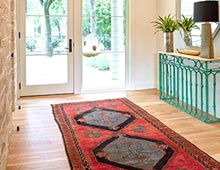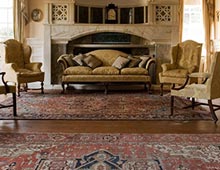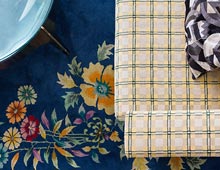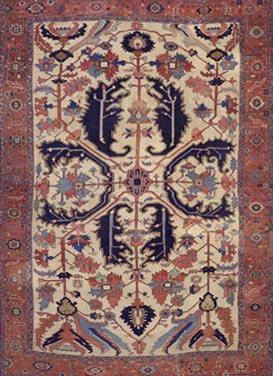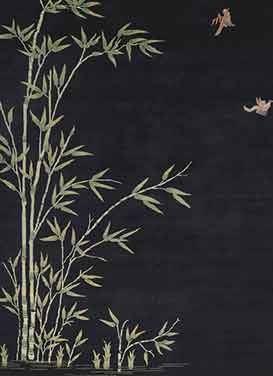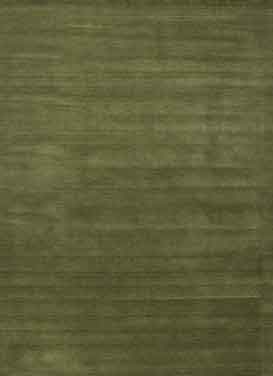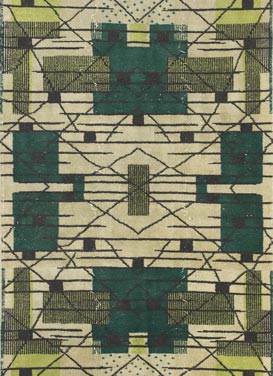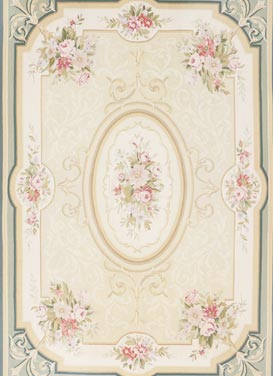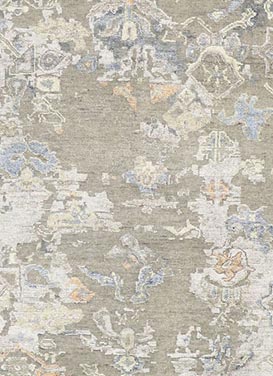Dhurrie Rugs

Dhurrie Rugs: A Timeless Legacy of Color and Pattern
Dhurrie rugs, also known as dhurri, durrie, or durry, are a testament to the rich tapestry of cultural heritage that spans across India, Pakistan, Afghanistan, and even parts of Burma. These exquisite handwoven creations have a distinct charm that sets them apart from traditional Oriental carpets. In this exploration of Dhurrie rugs, we'll uncover the intricate details of what makes them so special and why you should consider them for your home.
Dhurrie Rugs: A Visual Delight
The first thing that strikes you when you encounter a Dhurrie rug is its unique visual appeal. Unlike traditional Oriental carpets that are crafted by knotting weft fibers around the warp using a loom, Dhurrie rugs are made without a warp. This unique technique results in a thinner, more compact structure that's remarkably light and durable. You'll find Dhurrie rugs primarily produced in India, particularly around the city of Panipat. While the traditional format is square, rectangular, and even large Dhurrie rugs are not uncommon.
The Magic of Cotton
Cotton yarn is the preferred material for creating Dhurrie rugs, and it's easy to understand why. Cotton's versatility allows artisans to fashion rugs that are not only aesthetically pleasing but also incredibly comfortable. The use of natural fibers ensures excellent thermal insulation, making your home warm and cozy during winter while keeping it cool in the summer months.
Versatility in Design
Dhurrie rugs have a design philosophy that has evolved over the years. Older Dhurrie rugs tend to feature simpler patterns with fewer colors, often sticking to classic shades of white and blue, which are derived from indigo plant pigments. However, the 19th century ushered in a transformation in Dhurrie designs as machine-made variants became popular. To distinguish their creations, craftsmen infused vibrant colors and intricate patterns, resulting in unique and stunning pieces that grace modern homes today.
Materials Matter
Dhurrie rugs offer a wide array of materials to choose from, each with its own set of qualities. Wool Dhurries, for instance, provide warmth and durability, making them perfect for those seeking a cozy yet resilient carpet. On the other hand, silk Dhurrie rugs add an exclusive touch of luxury to any room. If you're inclined toward eco-friendliness, jute rugs are a sustainable choice, offering remarkable durability and a touch of environmental consciousness.
Finding the Perfect Fit
Dhurrie rugs come in an assortment of patterns, from multicolored stripes and geometric lines to abstract designs and regularly repeated motifs. This variety ensures that you'll find a Dhurrie rug that seamlessly integrates into your home's environment. Whether your décor leans towards ethnic, contemporary, or Nordic styles, there's a Dhurrie rug waiting to enhance your space.
Beyond the Floor
In the Indian tradition, Dhurrie rugs serve as versatile decorative elements. While they grace the floors of many homes, smaller Dhurrie rugs find their place on tables, as blankets, or as textiles to wrap delicate objects. Their ease of handling even makes them perfect for meditation and yoga practices.
Durability and Maintenance
One of the standout features of Dhurrie rugs is their compact fiber structure, offering exceptional durability and resistance to moths and other pests. Maintenance is a breeze, with simple vacuuming to keep them clean. Some Dhurrie rugs are even machine-washable, making upkeep hassle-free.
Dhurrie Rugs: The Artistic Essence
Dhurrie rugs have not only stood the test of time but have also evolved into works of art. With their rich history and intricate designs, they represent the perfect blend of tradition and modernity. The choice of a Dhurrie rug for your home isn't merely about adding décor; it's about bringing a piece of artistry and culture into your daily life.
Nodus: Elevating Dhurrie Rugs to Luxury
Nodus, a renowned brand, has redefined the concept of the rug as a contemporary work of art. Their hand-knotted Dhurrie rugs are not just floor coverings; they are masterpieces designed by famous artisans. Owning a Nodus Dhurrie rug means having a unique, prestigious piece that sets your taste and elegance apart.
For answers to your questions about Dhurrie Rugs, please call our knowledgeable experts at (214) 651-7847 who will be more than happy to help you learn more about the engrossing history of carpets and rugs made in the USA or, schedule an In-Store Appointment at 1511 Dragon Street in the Dallas Design District.
Things to Know About Dhurrie Rugs:
Dhurrie rugs offer a captivating journey through time, culture, and artistry. Their versatility in design, choice of materials, and ease of maintenance make them an exceptional addition to any home. Whether you're drawn to the heritage of these rugs or their vibrant modern interpretations, Dhurrie rugs bring a touch of timeless elegance to your living space. Consider furnishing your home with a Dhurrie rug and embark on a visual and cultural adventure that will leave a lasting impression.
Are Dhurrie Rugs Good?
Absolutely, Dhurrie rugs are a fantastic choice for several reasons. They are known for their durability, vibrant designs, and versatility in complementing various interior styles. Dhurrie rugs are lightweight, easy to maintain, and offer good thermal insulation. They are a valuable addition to any home, combining functionality with artistic appeal.
What Is a Dhurrie Rug?
A Dhurrie rug, also spelled dhurri, durrie, or durry, is a type of handwoven rug or thin flat carpet with origins in India, Pakistan, Afghanistan, and parts of Burma. It is a versatile item of home furnishing that serves both decorative and functional purposes. Dhurrie rugs are woven using a specific technique that creates a thin yet sturdy structure, setting them apart from traditional Oriental carpets.
What Is the Difference Between a Dhurrie and a Kilim?
Dhurrie rugs and Kilim rugs share some similarities but have distinct differences. Both are flat-woven rugs, but their origins and weaving techniques differ. Dhurrie rugs originate from the Indian subcontinent and are woven without a warp, resulting in a thinner structure. Kilim rugs, on the other hand, have a broader geographic origin, including the Middle East and North Africa, and are woven with a warp. Kilims often feature more intricate patterns and a thicker texture, while Dhurries tend to have simpler designs.
Where Are Dhurries Made?
Dhurrie rugs are primarily made in India, particularly in and around the city of Panipat. This region is renowned for its Dhurrie production. However, the Dhurrie weaving technique is also employed in other countries such as Pakistan, Afghanistan, and parts of Burma. Each region brings its unique style and patterns to Dhurrie rugs, making them a diverse and culturally rich choice for home decor.
How Can You Tell If a Dhurrie Rug Is High Quality?
Determining the quality of a Dhurrie rug requires attention to several factors:
- Material: High-quality Dhurrie rugs are typically made from natural materials like cotton, wool, silk, or jute. The choice of material affects the rug's durability and feel.
- Weave: A tightly woven Dhurrie rug is a sign of good craftsmanship. Check for uniformity in the weave pattern, as irregularities may indicate lower quality.
- Colorfastness: Authentic Dhurrie rugs should not fade easily. To test this, dampen a cotton ball and gently rub it on the rug's fibers to see if any color transfers.
- Design Complexity: While simpler designs are characteristic of traditional Dhurries, high-quality modern Dhurrie rugs may feature intricate patterns and vibrant colors. The design's complexity should be consistent and well-executed.
- Reversibility: Dhurrie rugs are often reversible, meaning you can use both sides. This feature indicates the rug's durability and craftsmanship.
- Origin: Consider the rug's place of origin. Dhurries from renowned production regions like Panipat in India often come with a reputation for quality.
By paying attention to these factors, you can make an informed decision and select a high-quality Dhurrie rug that suits your preferences and needs.
Applied Filters
–
- 2
- 10
–
- 3
- 21
-
-
No items found matching the search criteria
-
-
No items found matching the search criteria
-
-
No items found matching the search criteria
-
-
No items found matching the search criteria
Dimensions
–
- 2
- 10
–
- 3
- 21
-
-
No items found matching the search criteria
-
-
No items found matching the search criteria
-
-
No items found matching the search criteria
-
-
No items found matching the search criteria

